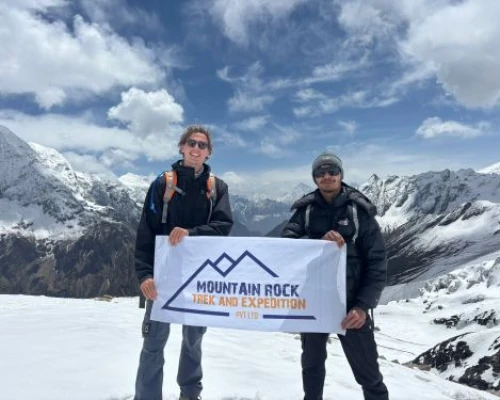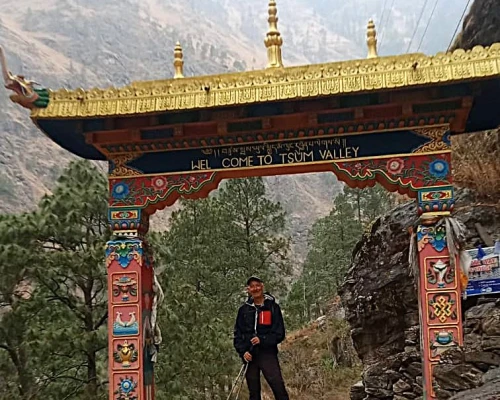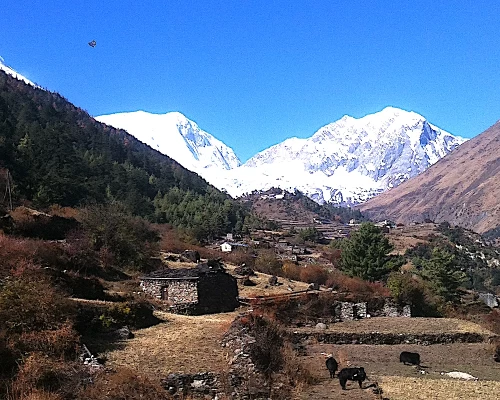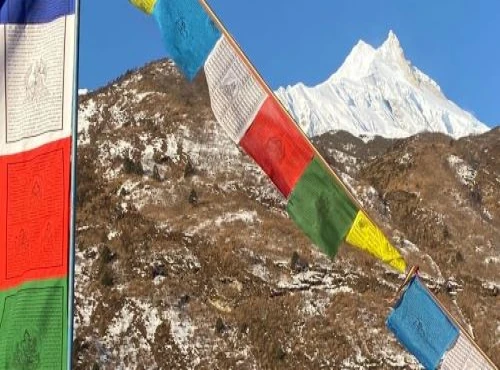Manaslu Region is located in the Northern Gorkha District. Mt. Manaslu, the world's eighth highest peak, will be closer to you if you do a circuit trek (8163m). Tsum Valley, one of Nepal's hidden treasures, will be visited throughout the journey. Both biologically and culturally, this valley is rich. Tsum Valley's lush and beautiful environment will enthrall you. Tsum Valley trekking, in the meantime, is considered a sacred Himalayan pilgrimage journey that takes you to Nepal's Gorkha region in the north.
The Tsum Valley Trek is a relatively new hiking path in Nepal's Himalayas that attracts many visitors. The primary attractions of this adventurous Tsum valley walk are the many towering snow peaks, beautiful monasteries, mystifying Tibetan cultural kinds of life, hundreds of waterfalls, and intriguing flora and wildlife. Unfortunately, the rough terrain and a lack of lodging options have made the voyage more difficult. As a result, only a few trekkers visit this region each year, making the Tsum Valley trek of 17 days ideal for those seeking solitude and adventure.
As you ascend the Budhi Gandaki River, you'll pass through various intriguing Tibetan communities. During your Tsum Valley trip, you will be immersed in Tibetan Buddhism's warmth and become a part of daily life. In addition, because the entire region has been spared from modernization, you will be able to experience a unique form of civilization. Snowland Adventure is thrilled to provide you with our well-crafted Tsum Valley-17-day itinerary.
Tsum Valley Trekking is a religious journey to Tsum's pilgrimage valley, framed by the Ganesh, Sringi, and Boudha peaks. The valley's residents, mainly of Tibetan descent, are rich in traditional art, culture, and religion. Trails lead to this isolated hidden paradise, including monasteries, beautiful chortens, mani walls, other decorations, and legends of the yeti.
We drive to Soti Khola the next day after preparing the permission for the restricted region in Tsum Valley, where our journey begins. We walk to MachhaKhola beside the stream and then to Doban over some severe rises and descents. A rough path leads to Philim, with SringiHimal in the background. After passing through Chumling, we arrive in Chhokangparo in the Upper Tsum Valley, where we can witness towering vistas of Ganesh Himal, BoudhaHimal, and HimalChuli. On our way to Nile/Chhule, we stop at PirenPhu (pigeon cave), a holy site with Buddhist paintings, calligraphy, and carved stones, where we may explore. The Mu Gompa, located at 3700 meters, is our next destination, after which we travel to RachenGompa, a nunnery, and then to Dumje. We travel by Samba TingdingChhupyang, a beautiful waterfall, on our way from Dumje to Philim. It takes six hours to walk from Philim to Tatopani, where you may rest in the hot spring. Then we return to SotiKhola the next day and drive to Kathmandu.
Tsum Valley is a pristine valley in the Manaslu region's northern reaches. This region's terrain provides an excellent walking path for hikers of all ability levels. This hiking path, The area, which was previously designated as a restricted region until 2008, is only 7 hours from Kathmandu's city.
Trekkers will walk through desolate landscapes in the Himalayan foothills during this journey. The vistas of the snow-capped mountains, such as Ganesh Himal, Boudha Himal, Sringi Himal, and others, are breathtaking. In addition, the trail's stunning views of the Himalayan dawn and sunset will enchant you.
This walk takes you across the upper Budhi Gandaki river valley and Tibetan communities such as Chhokangparo, Philim, Lokpa, Nile, and others. Tibetan tradition and culture are abundant in the distant, unknown Tsum Valley. You may see stunning chortens, Buddhist temples, and mani prayer walls along the walk. The cultural part of the walk makes it a one-of-a-kind adventure.
Things to do on this journey
- The appropriate season for this tour
- Faq regarding the Manaslu Tsum trek
- Take a scenic journey to Arughta, and from Chamje, take a scenic trip to Kathmandu.
- The tallest mountain in the region is Manaslu, which stands at 8163 meters and is the world's eighth highest peak. The area is varied, with Brahmin, Chhetri, Tamang, Magar, Tibetan, and Gurung people living there.
- Toshio Imanishi of Japan and Gyalzen Norbu of Nepal were the first to summit Manaslu on May 9, 1956.
- Endangered creatures such as the snow leopard and red pandas call the region home.
- The Tsum Valley is a secret valley in this region. It's well worth the trip.
- At the beginning of the hike, you'll be walking through tropical green hills with pine and oak trees.
- Explore the region of Manaslu's secret valleys.
- You can get as far as the Tibetan border at the northern edge of the Manaslu area.
- Tradition is culturally rich.
- Stunning landscapes.
- Explore monasteries, gompas, and chortens that date back thousands of years.
- Tsum Valley is a beautiful spot.











